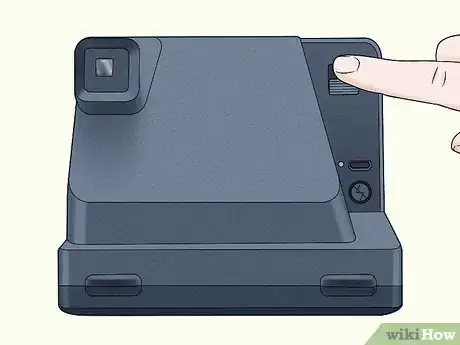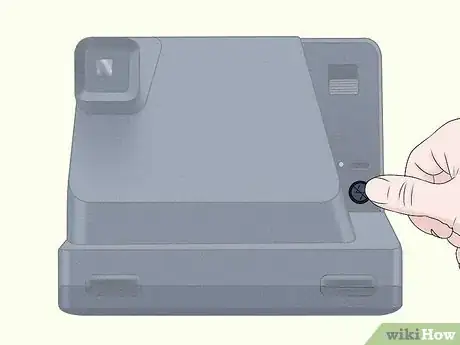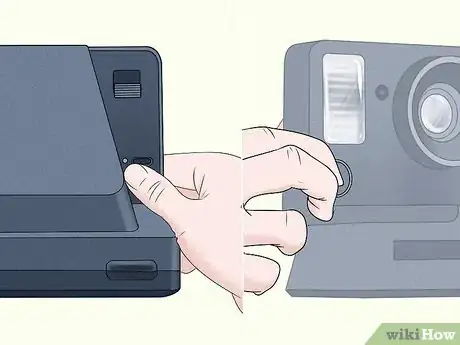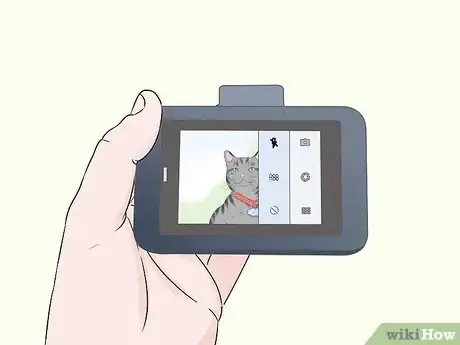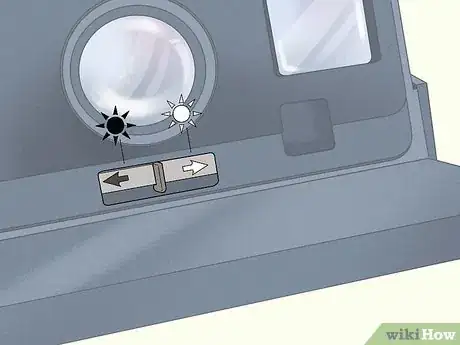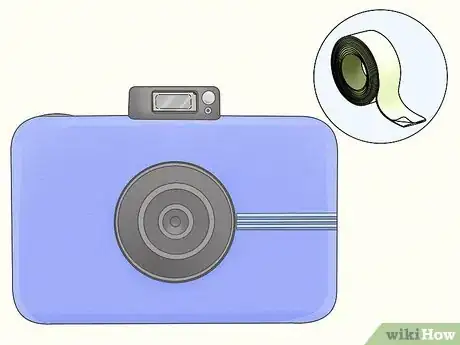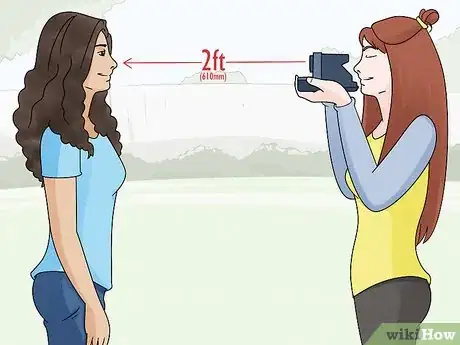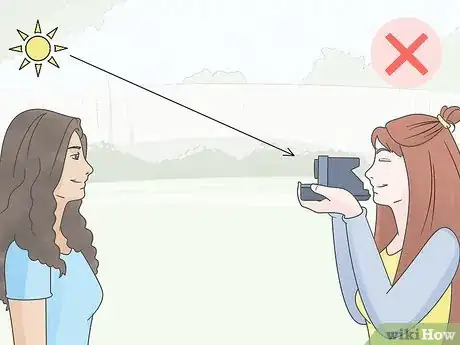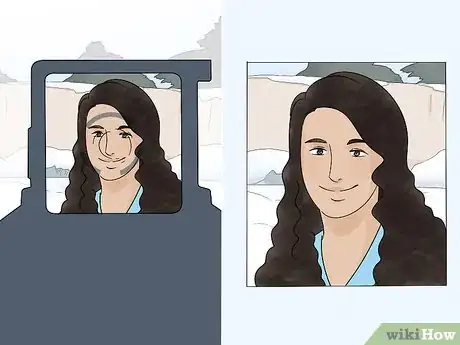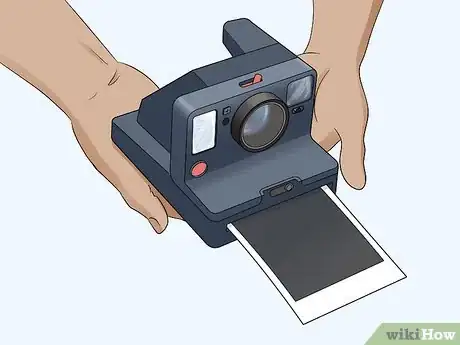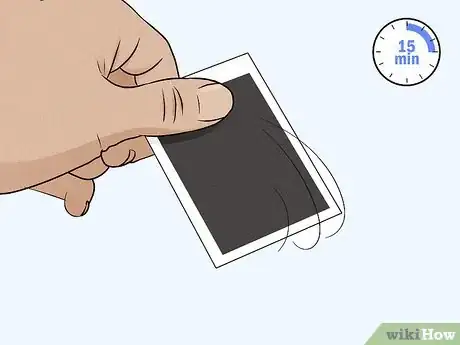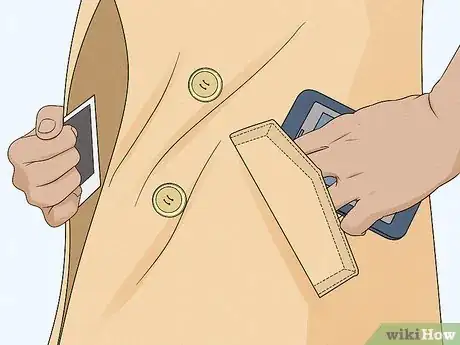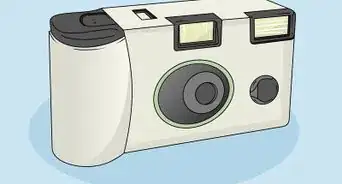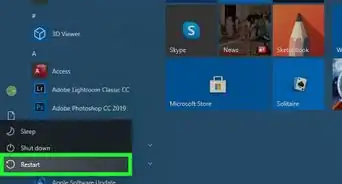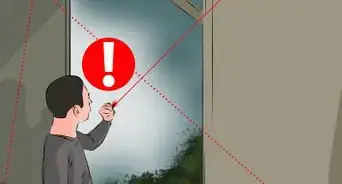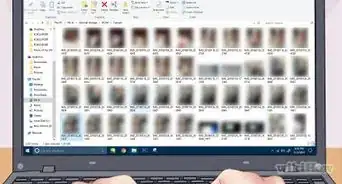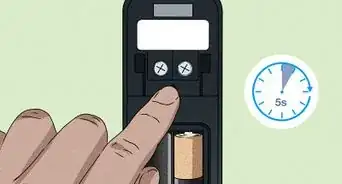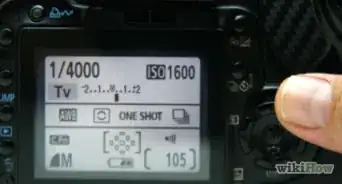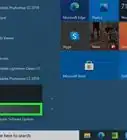This article was co-authored by wikiHow Staff. Our trained team of editors and researchers validate articles for accuracy and comprehensiveness. wikiHow's Content Management Team carefully monitors the work from our editorial staff to ensure that each article is backed by trusted research and meets our high quality standards.
This article has been viewed 19,584 times.
Learn more...
Using a Polaroid camera and printing off photos in the moment has a special kind of joy and magic associated with it. But of course, with just one shot to get the photo right, there’s also a bit of pressure. Most Polaroid pictures need the flash to come out clear and detailed, but if you’re out in bright sunlight, it could make your subject look washed out. In that case, you may need to override or even cover the flash.
Steps
Turning off the Flash Button
-
1Turn the camera on with the power switch button or by flipping up the flashbar. To engage or disengage the flash function, your camera has to be on first. Most models have a power button located on the front or top of the camera. The Polaroid Snap and some other models turn on when you flip up the flashbar, which contains the lens.[1]
- If you’re unsure of how to turn on your particular Polaroid, search online for a user’s manual for a diagram of the buttons and functions.
-
2Locate and push down on the flash override button. Each model is slightly different, but you should be able to find this button pretty easily! Look for the button that shows a lightning bolt with a strike going through it; it’s usually located next to the flash button or light. It may be on the front or the back of your camera.[2]
- Polaroids often need a lot of light to turn out well, so the cameras are set to automatically use the flash function, no matter what.
- The flash button is sometimes just an LED light that lights up when the camera is turned on to let you know the flash is ready to go.
Advertisement -
3Push the shutter button while still holding the flash override button. To disengage the flash, hold the override button as you take the picture. This can be a little tricky if you’ve never done it before and sometimes your fingers can get in the way of the lens, so take a moment to double-check that your hands are out of the way before your snap your photo.[3]
- Once you take the photo, you can release the override button.
-
4Access the menu on a Polaroid Snap to turn the flash on or off. The Polaroid Snap is a lot smaller than other models and doesn’t have the same buttons or functions on the exterior of the camera. Turn the camera on and access the menu. Scroll to the settings option, select the flash, and tap through the options until a line appears through the lightning bolt.
- Remember to turn the flash back on once you’re done taking the photo!
-
5Change the lighting by using the lighten/darken switch rather than the flash. The flash is usually pretty essential to taking great photos with clarity, but sometimes you want to make images appear darker or lighter. Some models of Polaroid have a lighten/darken switch that can create a brighter or darker photo.[4]
- In dim lighting, switch it to the lighten position.
- If it’s super bright out, switch it to the darken position.
- Polaroids, Polaroid Originals, and the I-1 cameras have these switches.
-
6Cover the flash with clear tape or tissue paper to reduce its intensity. If you need the flash because you’re taking a photo indoors but don’t like how washed out you end up looking, you can diffuse the intensity of the flash by covering it with something light and semi-translucent.[5]
- Play around with using 1, 2, or 3 pieces of tissue paper or tape for different results.
Taking a Good Polaroid Photo
-
1Stand about 2 feet (610 mm) away from the subject to take a clear photo. If you’re too close or too far away, the camera lens will focus on either the background or the foreground, especially if one of them is a lot darker than the other. Get in a close range to reduce blurriness.[6]
- This means that selfies are usually out of the question if you’re using a Polaroid. You could use the self-timer and set up the camera and position yourself a few feet away from it, though, to get a self-portrait.
- Being too close to someone or something can produce a blurry photo. Sometimes that effect can look cool, though! If you’re new to Polaroids, try playing around with different techniques to discover what works for you.
-
2Keep the sunlight or main light behind you or off to the side. Shooting straight into the light will result in a photo with a lot of contrast and you might not be able to see any details of the thing or person you’re shooting. The best rule of thumb is to stand so you’re facing away from the light.
- This is called “backlighting.”
-
3Crop your photos before you take them to get rid of unwanted visuals. With a Polaroid, you don’t have the option to digitally crop and alter images after the fact. If you’re taking a picture and don’t want strangers in the background, wait until they’re out of the way or reposition your subject so they’re not in frame.[7]
- When taking a photo, step back for a moment and look at the entire screen to make sure it looks how you want.
- The Polaroid Snap has the option to take digital photos that you can upload to your computer and then edit, but most models print a photo automatically, meaning you can’t crop the edges.
-
4Hold the camera as still as possible until the photo is finished printing. Pretend that you’re a statue! Moving around before the picture has fully printed could result in a blurry photograph.[8]
- Try holding the camera in the palm of your left hand for extra stability.
-
5Protect your photo from light for 5-15 minutes so it develops fully. Black and white photos need about 5-10 minutes, while color photos should have about 10-15 minutes. Keep your photo face down or in a pocket.
- You might be tempted to shake the film to help the photo develop, but that’s a myth! Leave it alone and move it as little as possible to help your picture come out perfectly.[9]
-
6Keep your camera and photos close to your body in cold weather. Temperatures lower than 55 °F (13 °C) can make your camera and film produce photos that aren’t as colorful or detailed as they could be. To prevent this, keep your camera warm by carrying it close to your body (inside your coat would be great), and keep printed photos close to your body, too.[10]
- It can be hard to keep pictures close to your body without bending them, but do your best. Gently slide them into a coat pocket.
- If you plan ahead, wear a shirt with a big front pocket so you can keep them in there.
References
- ↑ https://support.polaroid.com/hc/en-us/articles/115012601148-How-to-take-your-first-photo-with-the-Polaroid-OneStep-2
- ↑ https://support.polaroid.com/hc/en-us/articles/115012601148-How-to-take-your-first-photo-with-the-Polaroid-OneStep-2
- ↑ https://images-eu.ssl-images-amazon.com/images/I/91HrBrwTWGS.pdf
- ↑ https://support.polaroid.com/hc/en-us/articles/220597507-How-to-make-great-photos-with-the-I-1
- ↑ https://instantcamerablog.com/tips-and-tricks/how-to-turn-off-instax-mini-9-flash/
- ↑ https://vocal.media/photography/how-to-take-the-perfect-polaroid-picture
- ↑ https://vocal.media/photography/how-to-take-the-perfect-polaroid-picture
- ↑ https://sophort.com/wp-content/uploads/2017/12/Photo-Tips-Polaroid-600-English.pdf
- ↑ https://vocal.media/photography/how-to-take-the-perfect-polaroid-picture
